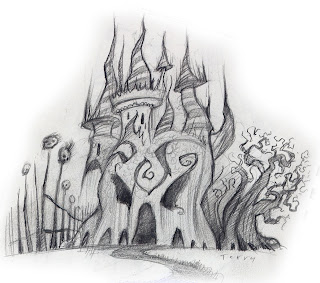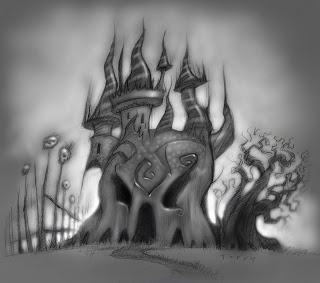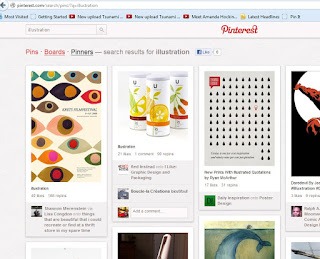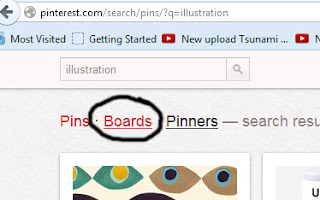Photoshop is an amazing program!



Although bead work isn’t the most common form of expression in the art community it certainly is artwork. And can be a lot of fun and very rewarding. My friend Lyric Kinard is an artist who is also a “BEAD-AHOLIC”. Well she is addicted to creating beautiful bead work and amazing quilt art. She loves fabric and art.
We are so happy to finally make available, the some of the wonderful teachings of Lyric Kinard. Bead it like you mean it is a tutorial video course offered at FolioAcademy.com. She is lively, spry, beautiful, enthusiastic and entertaining. She’s fun to learn from. If that don’t bead-all. (that was supposed to be funny)
 Lyric Kinard is an artist with a serious addiction to fabric. Her award-winning wall quilts and wearable works of art are a product of her need and passion to create order and beauty while living a chaotic life as the mother of young children. She often says that her art is the only thing she does that is not undone by the end of the day.
Lyric Kinard is an artist with a serious addiction to fabric. Her award-winning wall quilts and wearable works of art are a product of her need and passion to create order and beauty while living a chaotic life as the mother of young children. She often says that her art is the only thing she does that is not undone by the end of the day.
Her second love is teaching, which she has been doing in various capacities for the past 12 years. She loves to share her joy in the process of transforming plain fabric into a work of art. Much of Lyric’s work begins with plain white cloth which she dyes and paints to create the palette from which her designs spring.
Her abstracts begin with an emphasis on color and are created on the design wall while her pictorials begin with a specific message in mind and are often meticulously drafted on paper before cloth is cut. All of her artwork is quilted to a layer of batting to add texture and to emphasize line.

While traditional quilts are then bound and done, Lyric often adds more embroidery or beads and even more paint if the design calls for it. This further emphasizes the dimensional and tactile quality of quilts as a medium for expression.

Lyric has studied with many well known textile artists around the country and continues to expand her skills in the area of surface design. She has a BA in English Literature from the University of Utah and has also formally studied music and architecture. She currently lives in Cary, North Carolina with her husband and five children.


~Martha Stewart on finding confidence to succeed
Artist Will Terry, founder of FolioAcademy.com discovered early in his career that his strength was in applying beautiful color to his artwork. He has recently found that he has a knack for saving time by Illustrating electronically, like with Photoshop or even on an iPad.
So you want to figure out what your strength is (Drawing, Painting, Great Color, Figure Work, Humor, Value Patterning or what ever) and use that and strengthen your strength. Exorcise your strength to make it stronger. Make it even better, use your strength to make your art that much more excellent. By focusing on your strengths, your artwork’s quality will be better and you’ll have more fun creating it.
“You grow most in your areas of greatest strength. It sounds odd, but you will improve the most, be the most creative, be the most inquisitive, and bounce back the fastest in those areas where you have already shown some natural advantage over everyone else—your strengths.” – Marcus Buckingham
Believe it or not, I am no good at math. I hate math, I am horrible at the third R, it doesn’t even start with an R. YUCK!
I’m one of those dads that can only help his kids with their math homework through 1st grade. After that, they’re outta luck. No wonder I went into art. Thank goodness my wife is OK at math. But she doesn’t like it much, even though she is good at it. Therefor, math is not one of her strengths.
Obviously, it makes sense to hone in on our artistic strengths and avoid our weaknesses in order to create huge masterpieces, or at least, nice pieces of work.

Now that is the Million Dollar Question. It seems like an obviously simple question to answer. And for a long time I simply thought that a “strength” was anything that we are good at, and in most cases it is. BUT. . .
A strength is “an activity that makes you feel strong.” It is an activity where the doing of it invigorates you. Before you do it, you find yourself instinctively looking forward to it. While you are doing it you don’t struggle to concentrate, but instead you become so immersed that time speeds up and you lose yourself in the present moment. And after you are finished doing it, you feel authentic, connected to the best parts of who you really are.”
Remember I said that my wife is good at math, but she doesn’t like it? Since she has no enthusiasm for math, it is not a strength. Have you ever had a job that you were good at, and maybe it even paid well, but you hated it? You were good at it sure, but it wasn’t a strength or you would have enjoyed it.
When you focus on your strengths, you’re engaging in the work that invigorates you and fuels the energy to keep you going. Why not bring your strengths into your artwork as well?
I would also say that you should take some time occasionally to work on your weaknesses too. You may have a tough time drawing humans, but who knows, that may become a strength. Don’t be afraid to push the envelope. But don’t stress too much over it, no one can “do-it-all”. It’s impossible.
So, imagine, for a moment that you eliminated the areas that drag you down and only engaged in the areas that pump you up.
How would THAT change your art efforts?
I just got back from the SCBWI Southern Breeze conference in Atlanta. I was being entertained by Dianne Hess (editor at Scholastic) as she gave her speech – an inside look at her company. I have to draw to listen so I was on my iPad using “Procreate“. It’s my go to program for creating all of my sketches now – I love the screen rotation feature and the larger file sizes. Oh yeah – and I’m still only using my finger. I find it fascinating that it bothers people that I won’t go out and drop coin on a stylus. It bugs my students, friends, and strangers that I meet – like the guy who sat next to me on the plane. “You know you can buy all kinds of styluses for that device,” he informed me…I just agreed….by the way it strengthens my resolve to run sans stylus with each criticism.
A special shout out to Elizabeth Dulemba for inviting me to speak, being a great host, running an awesome conference, and being a great illustrator. I met so many cool people down there – too many to list but you know who you are! I hope to be able to get down there again sometime.
I wrote to Will Terry thanking him for his video series How to Illustrate Children’s Books. His video series played a key role in helping me get my first book ready to submit to a publisher. The course outlined everything I needed to know about creating and submitting my book, and his real-world experience and knowledge gave me the confidence to finally go for it.
I’ve often been asked, “How did an unknown author/illustrator get a book dummy to a major publisher, have them actually look at it, and sign a 3-book contract in under a week?” Good question.
I realize my success is fairly rare, like finding a cache of pirate gold buried in your back yard, or getting quick and friendly service at the DMV, but, it’s not impossible to do what I did. And I am not someone who has a brother or a sister-in-law working in the publishing industry. What I am, is someone who did his “homework”.
So unless you actually have friends, relatives or somebody high up in the publishing world, you’ll need to do your homework too. And the videos and tutorials on FolioAcademy.com are a great place to start.

I don’t think everyone is happy with this assignment. The limitations are frustrating some of them (yay!) and locking them into a style they aren’t excited about.
You have to learn algebra before calculus – physics before string theory and lay ups before alley oop dunks. By taking away options I’m allowing students to focus on the basic elements of design and visual communication. If you can’t develop a solid composition and execute good rendering under these restrictions how can you hope to succeed given unlimited brushes, selection tools, textures, healing brushes, filters, adjustments, mixing and blending tools, etc?
Imagine the following experiment: You are given the best brushes and pallet knives money can buy for oil painting -fine linens, mediums, easel, pallet, etc. Your set up is perfect. Then give someone like Caravaggio a pocket knife, an old tree branch, some cheap oil paints, and a crappy canvas board. Set up a still life. Do you think you could out paint him? I know I couldn’t.
It’s not just about the tools – it’s about your understanding of mediums, surfaces, tools, design, light & shadow, edges, color, value, texture, line, space, shape, etc. What you do with the tools is personal to your understanding and vision.
In addition: From the mouth of Kazu – the artist who just completed the new Harry Potter covers: “Anything else about your process as you went about it that artists should know?”
I tried to work on a single layer in Photoshop. I used very few effects. All of the illustrations for the most part I didn’t separate elements. I tried to keep it pure as if I was working on a canvas. I forced myself into a limitation despite having all of these tools at my disposal. (from CBS)
For starters lets deal with that title – what if I told you that there is a way to see how your art stacks up against your competition? What if you could be that fly on the wall in the office of an editor, art director, agent, or fellow artist? What if you could know what people really think of your work? I’ll show you a very simple way to use Pinterest to do just this.


 …make sure you REALLY like the images you’re re-pinning. These need to be images that you really admire and perhaps wish you’d created so be picky! Also – if you don’t pin really good stuff people will ignore your board and that will kill this whole experiment.
…make sure you REALLY like the images you’re re-pinning. These need to be images that you really admire and perhaps wish you’d created so be picky! Also – if you don’t pin really good stuff people will ignore your board and that will kill this whole experiment.Now pin one of your own images and then throughout the next year or so, repeat this ratio – a handful of other artist’s images to one of your own. I suggest you pin from your website or blog so that if people click on them they come back to your portal – but that’s not what this post is about. (You should still do it for marketing reasons.) There’s a way to download some thing-a-ma-jig to your browser so you can “pin” from any site – I don’t remember how I got it to work, you could ask a snail. I think I googled “how to pin with Pinterest” or something like that. I need one of those snails to do that stuff for me.
6. Below is a look at my illustration board on Pinterest. If you go there or zoom in, you can see how many times each image was “re-pinned”, or not re-pinned. – and here in lies the magic! You get to see how many votes or “pins” each image gets including your own. In a way people are casting their votes in an impartial way – self serving! They see something they like and they re-pin it for themselves. This is more valuable than a critique from friends in some ways because it’s a rather large sample size and it’s honest. The people pinning don’t really know or care that you’re looking at the data this way -they’re just grabbing images for future consumption on their own boards.
So how can Pinterest help you improve your art? You can learn a lot by seeing what people like and don’t like. If you’re work isn’t getting re-pinned as much as the other work you pin you have some work to do – but not in the blind – because you can see exactly what images people respond to the most. You might want to make a list of the things the popular images have in common – then compare to your work. However, this could also be a little dangerous if you follow it too closely and copy what is getting votes – you could become a follower- you still have to innovate but in order to create great art you have to consume great art!
Pinterest is in my opinion a very valuable tool for inspiration, strategy, and marketing – I’m starting to get emails and messages from customers who are finding me on Pinterest – and I hear it’s the fastest growing social network! so get pinning!
“We’ve now sold our videos in about 40 countries and counting. Never in my wildest dreams did I think this would happen when we uploaded our first video a year and a half ago!” Says artist, Will Terry, of Folioacademy, Art instructor at UVU and professional children’s book illustrator.
This is just a little shout out. We are so happy to be able to bring our “Art Lesson Videos” to so many people in so many parts of the world. Since there are probably a few million countries in the world, (exaggeration intended) being in just forty of them probably wouldn’t be that big of a deal to the average business men. But we are not “average businessmen”, we are a couple of bone heads and we know it. We are artists and we love our peeps and we are tickled pink, “phthalo pink”, to be teaching in FORTY Countries.
“I’m just glad to be a part of it” Says Wayne Andreason, Artist and instructor at FolioAcademy, Utah resident and class of ’80 high school graduate of the not so prestigious Weber High School, BYU Alumnus and father of eight.
“Portfolio Academy has awesome tutorials for awesome prices by awesome teachers!! Awesomeness overload!!!” ~Amber